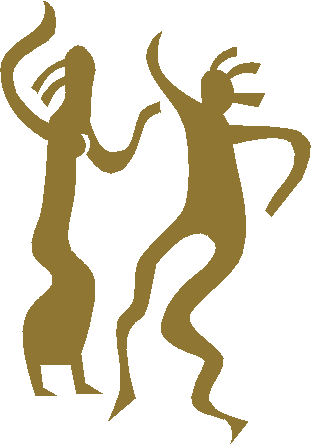The
BALLROOM DANCES  Social
dancers have fun dancing not only the ten dances included in competitions, but also quite
a number of other dances as well. Surely social dancing is more relaxed; dancers don't
have to exhibit and show off. They just have to express themselves in the dance. Social
dancers have fun dancing not only the ten dances included in competitions, but also quite
a number of other dances as well. Surely social dancing is more relaxed; dancers don't
have to exhibit and show off. They just have to express themselves in the dance.
Yet all
dances have clearly defined characteristics and patterns which differentiate one from the
other, which we rediscover here. Otherwise, they wouldn't be known as different
dances.
Here we'll share our
understanding of the essence, history, characteristics and special techniques of the
individual dances, using the Universal Unit System's (UUS)
annotation method. The annotation system is presented in a dance sheet where one can
easily determine the foot used, the direction made at what time, plus the body and arm
movements which go with the move.
Do let us know what you
think of this system. Is it easy or hard to understand? What else should we include? Social
dancers have fun dancing not only the ten dances included in competitions, but also quite
a number of other dances as well. Surely social dancing is more relaxed; dancers don't
have to exhibit and show off. They just have to express themselves in the dance.
Yet all
dances have clearly defined characteristics and patterns which differentiate one from the
other, which we rediscover here. Otherwise, they wouldn't be known as different
dances.
Here we'll share our
understanding of the essence, history, characteristics and special techniques of the
individual dances, using the Universal Unit System's (UUS)
annotation method. The annotation system is presented in a dance sheet where one can
easily determine the foot used, the direction made at what time, plus the body and arm
movements which go with the move.
Do let us know what you
think of this system. Is it easy or hard to understand? What else should we include?

|
